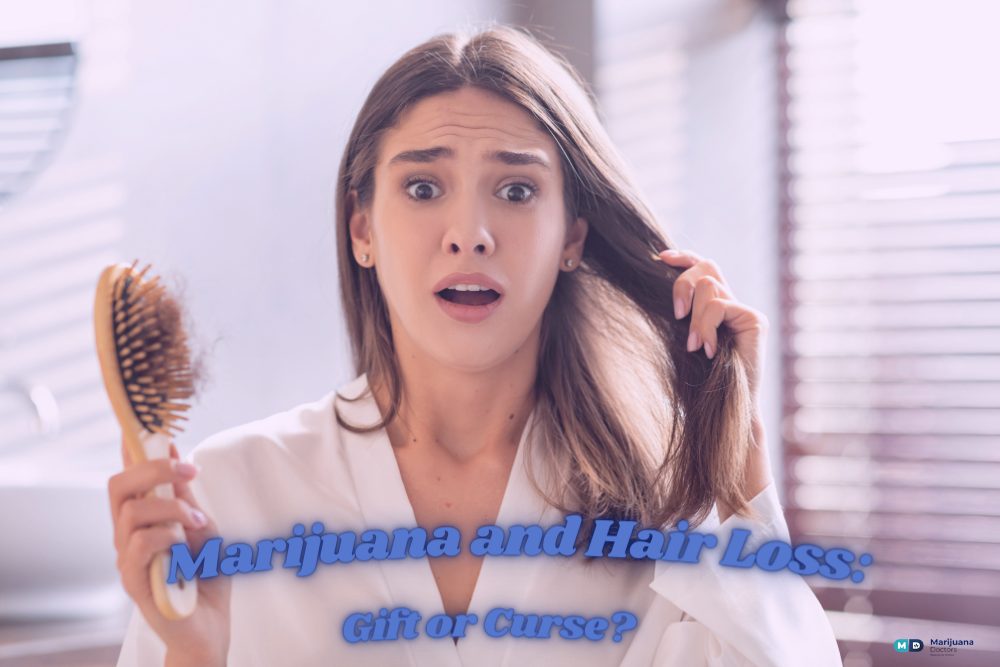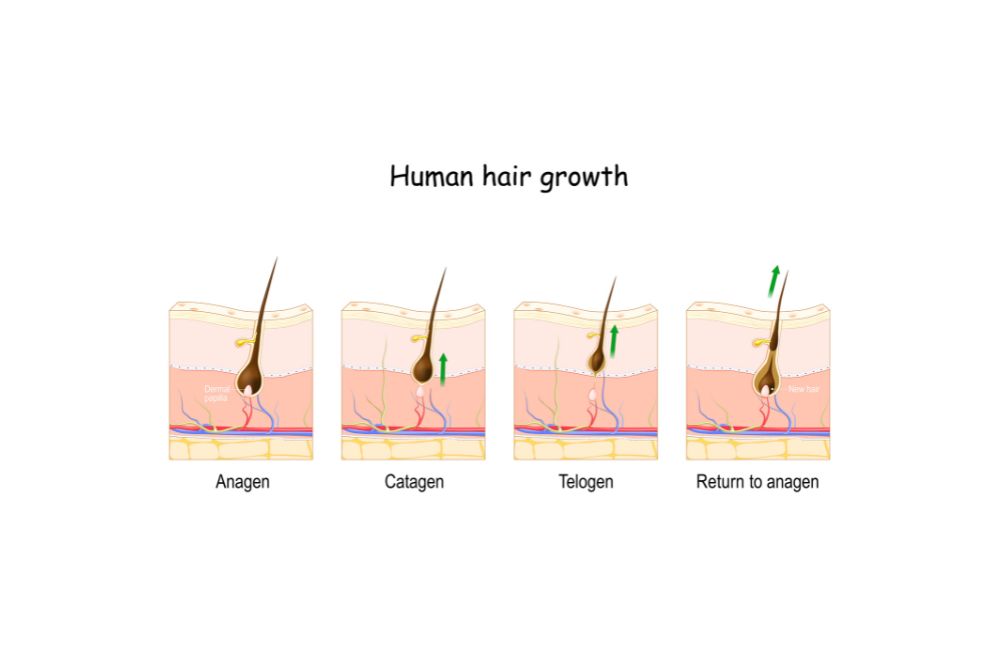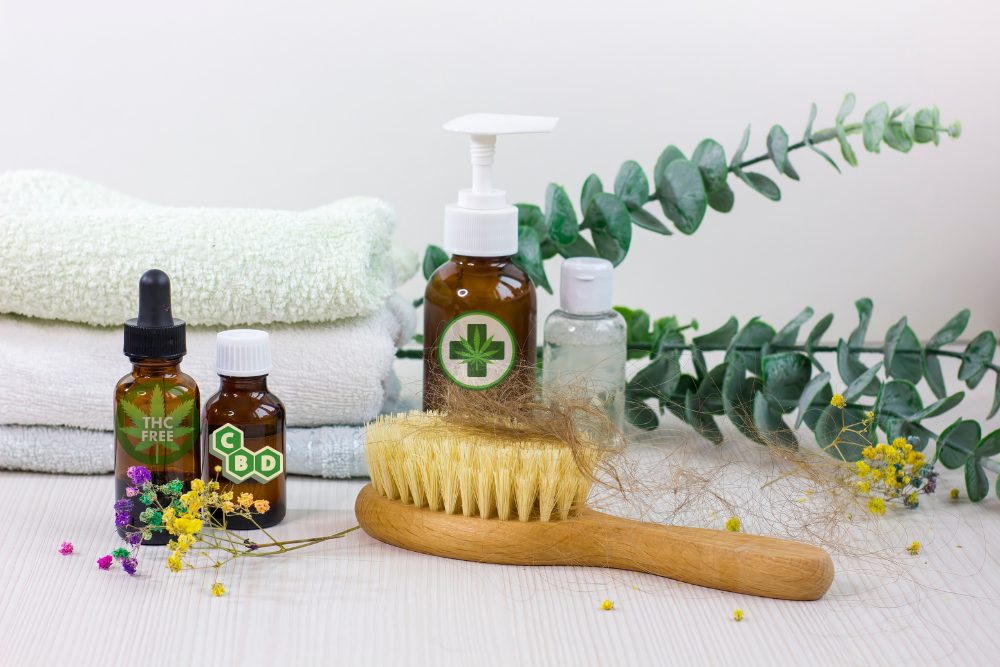
Hair today, bald tomorrow! At least, that’s one of many thoughts that run across the minds of individuals dealing with hair loss prematurely or unexpectedly. One of the biggest concerns in the cannabis community involves marijuana usage and hair loss.
With rumors and limited evidence floating about the effects of marijuana use on hair, it’s not surprising that many long-term and novice users find themselves with questions. Although there’s no shortage of hair weaves and supplements to camouflage and prevent or restore missing hair follicles or definitive clinical evidence proving the contrary, it remains a common yet quietly held concern for many current and potential cannabis users.
There’s no denying the harmful psychological effects of hair loss, i.e., low confidence, poor self-esteem, anxiety, depression, etc. Yet, not everyone dreads the shedding of hair follicles; some find it a freeing and welcome change. If you are experiencing hair loss or worrying about how your love of marijuana may affect your hair, you’re in luck!
Read this to learn the truth about marijuana and hair loss.
Hair is a significant defining physical feature for many because it has an intricate connection to their personality. Hair actually has a bigger role in overall health and appearance than many people realize. It’s responsible for protecting different areas of the body from toxins and temperature irregularities.
Hair loss is incredibly common and, in many cases, normal. It can occur at any age and is not always due to a health or medical problem. It’s estimated that one out of every five adults will experience some degree of hair loss during their lifetime.
Thinning impacts up to 60% of the male population and starts around the age of 35. By the time they reach 50, up to 85% of them will have a significant amount of hair loss induced thinning due to androgenetic alopecia, common male pattern baldness, etc. Thinning and hair fall are increasingly common around the age of 40 in 40% of women and 80% by 85.
For example, to help protect the body from freezing, tiny hair strands all over the body become taunt and straight to help slow and prevent the loss of body heat. The hair follicles of the eyelashes and eyebrows help keep dirt, sweat, dust, and pathogens from getting into the eyes and body.
Many sadly give little thought to the importance of hair besides their appearances until they experience hair thinning or balding. While the most common reactions surrounding hair loss includes using hair weaves, wigs, and supplements to manage it, these measures do little to address the root cause. Without a formal medical evaluation of the scalp and overall health, hair loss can lead to balding and become permanent.
Hair follicles first appear on the body around the 14th week of pregnancy. Still, it isn’t until around the 20th week of pregnancy that tiny hairs appear on the face, primarily the lips, chin, and eyebrows. Once formed, hair follicles continue to increase in size and become functional.
Normally new hair cells push old hair strands out of the scalp. The growth rate for hair on the head ranges from 0.5 to 1.7 centimeters per month. Body hair grows much slower than scalp hair.
Of course, it’s important to mention that hair growth and retention rates are different for everyone and influenced by factors such as hair shape, pattern, shaft thickness, health, genetics, and ethnicity.
The Hair Lifecycle in Stages
Hair is made of protein fibers. The average strand has an average life expectancy of 3 to 7 years, growing an average length of 6 inches a year. Of course, hair growth rates vary and depend on various factors, including the location of the body, hereditary, nutrition, health, lifestyle, etc.
Hair grows in stages. Did you know that the growth phase dominates the hair lifecycle? At any given time, the hair follicles on your hair and body are in the growth phase.
Some hair loss is a normal component of the hair growth cycle. New hair cells continue to replace old hair cells as they reach maturity until the process stops, usually by injury, environmental, health, or old age.
Not all babies are born with a head full of hair. Also, infants go through a phase that causes temporary hair loss as their permanent hair follicles mature and develop shortly after birth. In children, hair loss can also be attributed to environmental concerns, such as friction, tight hairstyles, and improper hair care.
Other common reasons for childhood hair loss include fungal infections, autoimmune disorders like alopecia or other inflammatory ailments, poor diet and nutrition, anxiety, shock, scalp injury, or cancer.
The average person loses hair all the time. Healthy individuals can lose up to 150 hair strands daily. But, since hair growth is continuous, most don’t notice much or any reduction in their hair volume. Almost everyone experiences hair loss at some point in their lives.
Despite its prevalence, many adults experiencing decreased hair volume due to strand or follicle loss rely on various proven and unproven methods and products to prevent it.
Below are the most common culprits responsible for adult hair loss.
Hormones play a critical role in overall hair growth and appearance. Aging often causes hormonal deregulation and chemical imbalances that change body functions and health and negatively impact the hair lifecycle. Health-related hair loss does occur from reproductive hormone imbalance, nutritional deficiencies, genetics, autoimmune, inflammatory conditions, and physical trauma.
For example, alopecia areata is a common autoimmune disorder that prevents hair growth. Androgenetic alopecia is another condition that causes male and female pattern baldness in adults. It’s estimated that one out of every 1,000 people suffers from alopecia areata.
The condition causes small and large patches of hair loss and is not limited to hair on the head. Alopecia can affect hair follicles anywhere on the body. Male pattern balding is another medical disorder that causes hair loss and premature baldness.
Hair loss is one of several unwelcome changes that adults can expect to encounter to some degree as they age. Some age-induced hair loss is unavoidable and should be expected with age. Aging also impacts the function and health of the hair lifecycle, causing the following notable effects.
Many nutritional supplements promise to slow or reverse hair loss and require users to take them religiously for an extended period. The results are often lackluster and cease once users stop consumption. Clinical evidence shows that some hair care products can help improve hair strength and prevent breakage and thinning.
Minoxidil is available over the counter and by prescription and is reportedly effective for certain hair loss or balding types. With regular use, its antiandrogenic, anti-inflammatory, and vasodilating properties reportedly reverses some degree of hair loss and increase hair retention rates. Results vary, and the product tends to become less effective with long-term use.
Anti-androgens like Spironolactone inhibit androgen activity from counteracting hair loss. It’s often prescribed for women dealing with diffuse or excessive hair thinning. Not all types of hair loss are treatable.
Mild cases and those related to poor styling care and certain health issues may benefit from taking nutritional supplements like iron and biotin, prescription dermatological medications, and oral contraceptives or HRT to help improve hair health and retention.
It’s important to note that certain types of birth control are associated with hair loss claims due to non-age-specific issues. Individual results may vary.
Despite the many products marketed toward individuals dealing with hair loss, not all types are reversible. Studies show that those losing hair quickly or experiencing a rapid rate of hair loss often experience better results with wigs and hair implants. Whereas many individuals are experiencing hair loss due to health, medical and styling reasons find success with supplements and medications in addition to weaves.
Before using any supplement, medication, or remedy, it’s helpful to consider how marijuana could benefit the fight against hair loss.
Cannabis cannabinoids bind with endocannabinoid receptors throughout the body to regulate hormones. Hormonal imbalances are common in some hair loss cases. Hormonal hair loss is not always permanent.
For example, women experience changes in their hair after childbirth and during menopause. Men often develop bald spots from androgenic alopecia. These changes trigger increases and decreases in different stages of the hair growth cycle that cause hair loss.
Both CBD and THC-rich strains are beneficial for alleviating the symptoms of menopause as well.
Marijuana reportedly balances chemical irregularities to protect hair health. Weed contains vitamins and nutrients like proteins, antioxidants, and other beneficial substances that help combat hair loss caused by nutritional deficiencies.
Malnutrition is one of the leading causes of hair loss and baldness worldwide. People who use cannabis and choose healthier snacks when they get the munchies can increase their nutrient intake to stave off hair balding.
Regular cannabis use can make conventional medication side effects more manageable. It’s no secret that certain prescription meds like those normally prescribed for depression, anxiety, and acne cause side effects, including hair loss. Even treatments like chemotherapy can lead to nausea, vomiting, and appetite suppression, which can cause hair loss from poor nutrition.
Cannabis has many known and unknown properties that fight inflammation, boost immunity, promote sleep hygiene, good moods, etc. Long-term or regular use may increase hair growth. Many cancer patients who use cannabis reportedly experience new hair growth on their scalps and other areas of their bodies several months after their last treatment.
CBD-rich cannabis strains are beneficial for those seeking relief from stress and anxiety without the psychoactive effects. Marijuana makes it easier for users to handle stress, a response that increases cortisol levels in the body and triggers function irregularities. Users can manage their stress better and maintain lower cortisol levels to promote hair retention.
Cannabis can be infused into products and oils and applied to the scalp to improve health and add protein to coat and strengthen the hair from breakage. Once absorbed into the skin, these topicals help prevent moisture loss and stimulate hair growth to combat balding. Other common ways to use marijuana if you’re worried about hair loss include vaping, edibles, oils, tinctures, and topicals.
Ongoing research continues to highlight the various effects of marijuana on the mind and body. While the exact cause of hair loss varies per individual, the solution to overcoming it lies in determining the reason specific to your situation.
And while there’s no shortage of culprits to consider, including genetics, work and life stressors, health, etc. There’s no definitive evidence on the effects of marijuana on hair loss. There are, however, reports from users highlighting its impact on slow hair growth, thinning and balding.
No Information on MarijuanaDoctors.Com should be used to diagnose, treat, prevent or cure any disease or condition. You can view our Full Disclaimer here.